A trip through Yucatán history
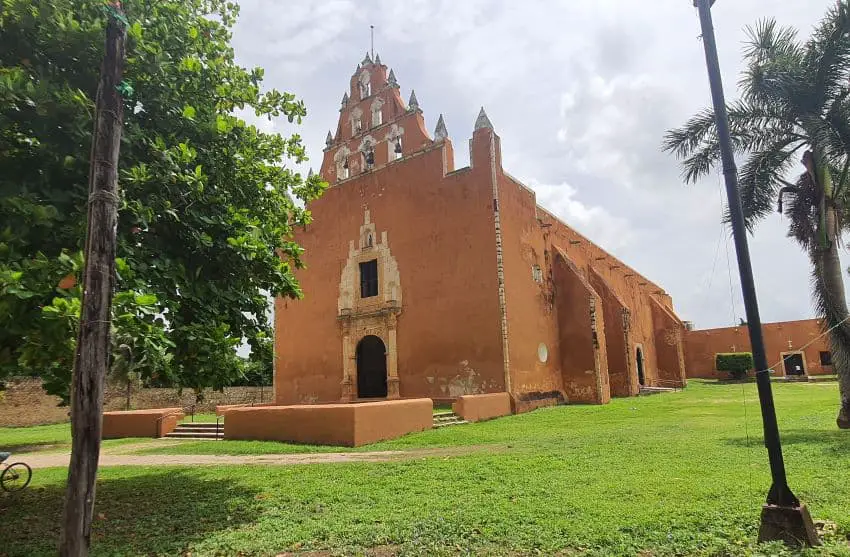
With a wonderful blend of the pre-Columbian and colonial eras, history buffs are bound to love the experiences the state of Yucatán offers. You probably know about popular attractions like Chichén Itzá, which attract large crowds. But if you prefer to see the less-visited areas without missing out on cultural experiences, make a day trip along the Convent Route.
Ancient Mayas settled in the region even before 1500 B.C., and many archaeological sites bear witness to their advanced civilization. The Spanish arrived in Yucatán in the early 16th century, and the colonial architecture and churches from that period are also widely visited today. The Convent Route is one of the best ways to take in both cultures south of Mérida.
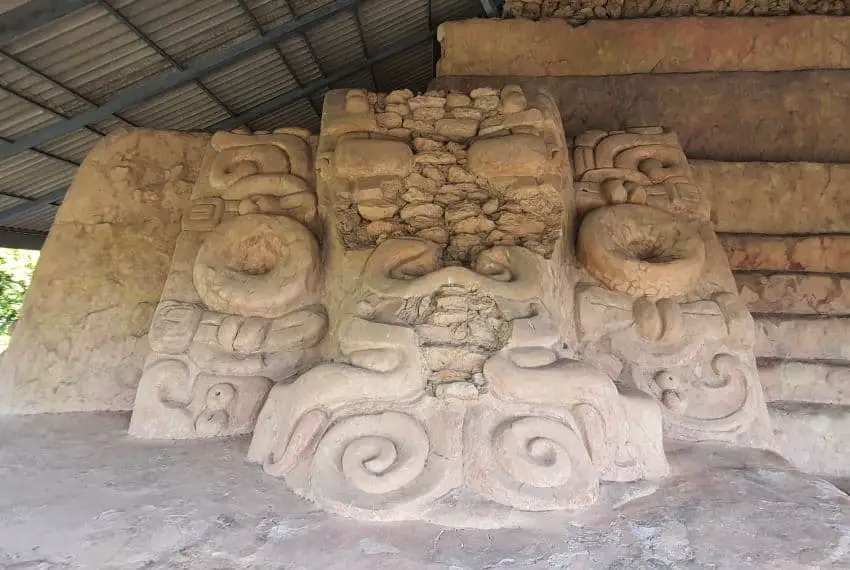
What is the Convent Route?
This circuit takes you through several towns with colonial churches, convents and ancient Maya sites. A popular option is to travel from Mérida to Maní, which is doable in a day. Some definitions of the Convent Route include the yellow city of Izamal and other towns, but you might need more time to cover all that ground.
We’ve put together this guide to help you visit some of the main attractions on or near the Convent Route. It’s best to use your own transport and start your day early.
Acancéh
Acancéh is located around 25 kilometers from Mérida via highways 180 and 184. The ancient Mayas first inhabited the area during 700-50 B.C. The centrally located pyramid, which you won’t miss, houses some magnificent stucco masks. You can buy tickets from the National Institute of Anthropology and History (INAH) post across the road. Take the stairs up to the masks to get a closer look. Their features are thought to represent the Maya sun god Kinich Ahau. The INAH official can also let you into the Palace of Stuccos on Calle 18. Once inside the building, look for the famous 13-meter-long stucco frieze with anthropomorphic figures.
Across the road from the main pyramid is the brightly painted 16th-century church dedicated to Our Lady of the Nativity which is worth visiting. Also nearby is the convent and church of Our Lady of Guadalupe.
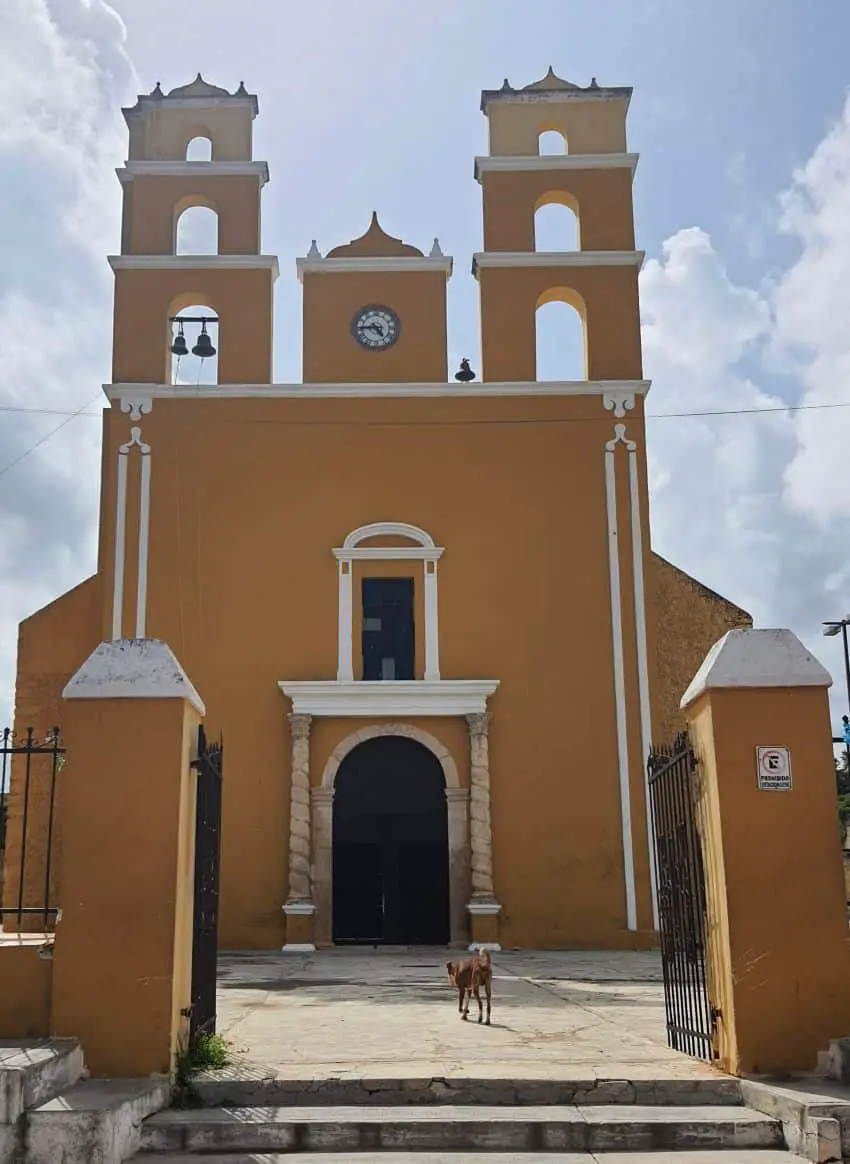

If you have more time or want to divert from the Convent Route for a cenote dip, go to Cuzamá or Homún, a 25 to 30-minute drive from Acancéh. I recommend making a separate cenote-hopping trip so you can relax and bask in their beauty without rushing around.
Tecoh
From Acancéh, continue south for about 10 kilometers to Tecoh. This town has a church dedicated to Our Lady of Assumption. It appears to be built on an ancient pyramidal base, which is not an uncommon sight in the region. The church’s interior, especially the altar, is worth seeing.
Less than 20 minutes from the town is Hacienda Sotuta de Peón. They offer many adventure and wellness experiences, and you can book a tour that will give you a glimpse into the region’s once-lucrative henequen industry. These tours do take a few hours and might warrant a separate visit. The hacienda also has accommodation and a cenote.
Telchaquillo and Mayapán
About 13 kilometers from Tecoh via Highway 184 is Telchaquillo, with a church and a nearby cenote. The town is worth a quick stop if you have time. If not, continue for another five minutes to the archaeological site of Mayapán.
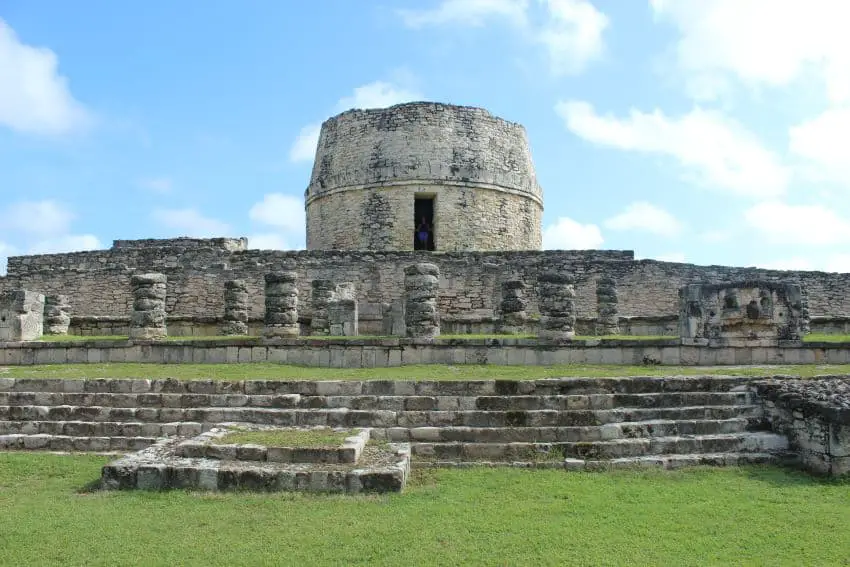

First occupied around 300 B.C., Mayapán became an important city around the 13th to 15th centuries. With few visitors, the site is peaceful and ideal for a relaxed visit. It’s best to get there as early as possible to avoid the afternoon heat. Climbing the Castle of Kukulcán, the site’s 18-meter-tall main pyramid, might be somewhat tiring, but it offers spectacular views.
This area has several cenotes. I recommend Noh Mozon, which is hidden in the wilderness about 10 kilometers from Telchaquillo. But poor road conditions mean you’ll lose about an hour going back and forth, so it may be better to go another day.
Tekit, Mama, Chumayel and Teabo
Take Highway 184 toward Tekit, which lies about 18 kilometers from Mayapán. Famous for its guayabera shirts, Tekit is a good place to shop for traditional clothes if you aren’t too tired by this point. The town also has a beautiful 16th-century church dedicated to Saint Anthony of Padua.
Next, you can continue to Mama, whose name is thought to be “No No” in English, since “ma” is equivalent to “no” in Yucatec Mayan. Here, you can see the Church of Ascension, a unique church with a bell-shaped dome. Mama also has a former Franciscan convent and a chapel that areworth seeing.
If you want to see more towns and churches before visiting the Pueblo Mágico of Maní, go to Chumayel, about nine kilometers from Mama. It is famous as the origin of the Chilam Balam of Chumayel. Named for the towns they were kept in, the Books of Chilam Balam are manuscripts containing information relating to the ancient Maya, including rituals, medicines and astronomy. Chuyamel is also home to a 16th-century church, the Temple of the Immaculate Conception. Less than 10 minutes from Chumayel is the town of Teabo, which has its own beautiful former convent and parish.
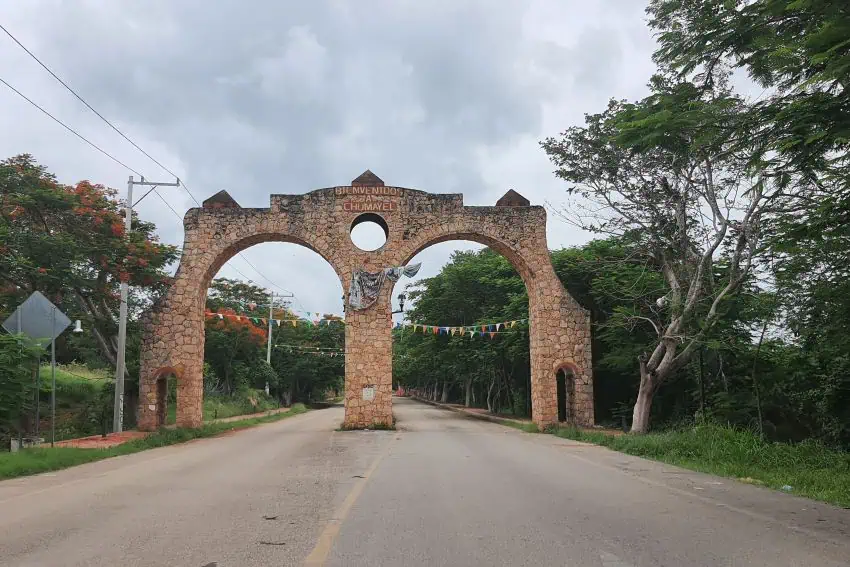

Maní
With colorful decorations and buildings, Maní really gives you the vibe of a magical town. But unfortunately, the town also has a dark history. It was the scene of a 16th-century tragedy: the auto-da-fé of Maní. A tribunal of the Spanish Inquisition led by Franciscan friar Diego de Landa burned dozens of Maya codices, destroying the knowledge contained in them forever.
In the town’s main square is the former convent of San Miguel Arcángel, with a large atrium and an open chapel. The altarpieces and remains of old murals in its church’s interior are also worth seeing. After visiting the convent, walk around the town’s main plaza and the market to pick up traditional items like honey-based products, clothes, and souvenirs. The town is also famous for Melipona beekeeping, so you can visit a meliponario, or Melipona apiary, like U Naajil Yuum K’iin or Meliponario Lool-Há.
Depending on your arrival time, have a late lunch or an early dinner in Maní. If you prefer meat, try the town’s famous Poc Chuc, a citrus-marinated and grilled meat dish, typically made using pork. El Príncipe Tutul Xiu is a popular restaurant for Poc Chuc.
From Maní, you can also connect to the Ruta Puuc and visit several lesser-known archaeological sites in the Puuc region.
Thilini Wijesinhe, a financial professional turned writer and entrepreneur, moved to Mexico in 2019 from Australia. She writes from Mérida, Yucatán. Her website can be found at https://thilini.me/
Source: Mexico News Daily

